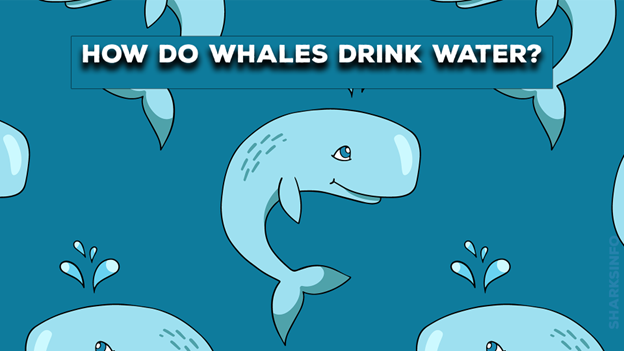The marine world devours thousands of sea creatures in its depths, from microscopic zooplankton to gigantic whales. With their entire lives spent in the water and their food requirements met by eating other sea creatures, it is intriguing to consider how whales drink water and if they drink it or not in the first place.
Remember, every living being needs some amount of water to survive, and whales are no exception, even though they live in the oceans. So it is clear cut they need water to survive, but how whales drink it is the question to ask.
Water Consumption by Whales
Whales do drink water, but not the way land animals do. Similarly, they don’t need as much water as land animals since they are exposed to the sun directly. More important to know, whale drinks water straight from the ocean. Although it is not their primary source of water, whales are capable of processing seawater efficiently, just like most other marine animals.
Whales use a variety of techniques to drink water, including drinking through their blowholes and taking in gulps of water while swimming. Whales can also suck up water through their nasal passage or rectum. All of these methods allow whales to extract the maximum amount of fresh water possible from seawater.
Having said that, whales acquire water via their prey with a more passive method. During digestion, water is produced as a by-product, so when eating their prey, their bodies absorb this water. The practice is known as a metabolic breakdown. In the course of their digestion, the whale system breaks down their prey into nutrients, which are further processed into water and energy.
How whales are able to drink saltwater?
Whales use several different methods to filter seawater and extract the necessary amount of fresh water for survival. First, whales use their baleen plates to strain out small particles from the seawater. These particles include bacteria, parasites, and fish bones. Next, the whale filters this salt-free liquid using its large intestine.
Finally, they absorb needed nutrients from the liquid through their stomachs’ villi. This process helps protect whales from dehydration because they are able to consume saltwater without becoming ill or having problems breathing underwater.
Conclusion
Whales range in size from the pygmy sperm whale, which is about the size of a human, to the blue whale, which is the largest known animal on Earth. They drink seawater through their mouths and filter it out using their baleen plates (whalebone). Saltwater can be effectively filtered by their kidneys, and reabsorption can take place. With that, whales fulfill most of their water requirement from what they eat through the process called metabolic breakdown.







